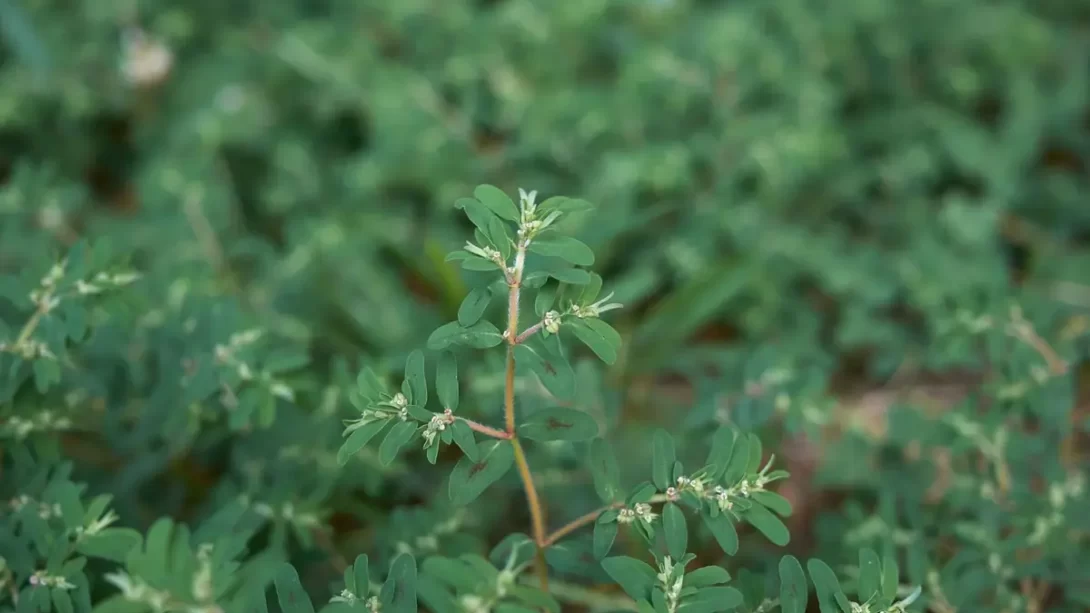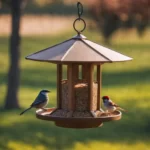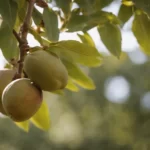Spotted spurge, scientifically known as Euphorbia maculata, is a common weed found in gardens and lawns. Recognizable by its low-growing, mat-forming habit and distinctive spots on its leaves, this weed can rapidly take over outdoor spaces if not controlled. Effective management of spotted spurge is crucial for maintaining the health and appearance of your garden. This article provides a comprehensive guide on various methods to manage and eliminate spotted spurge effectively.
Spotted Spurge
Spotted spurge is an annual weed, meaning it completes its lifecycle within a single growing season. It typically has:
- Identifying Characteristics: Small, oval leaves with a red spot in the center, and a sprawling growth habit. It produces a milky sap when broken.
- Growth Habits: It thrives in warm, dry conditions and often grows in cracks in sidewalks, driveways, and poor or sandy soils.
- Life Cycle: Understanding its life cycle is key to effective control. It germinates in the spring, grows rapidly in summer, and sets seeds by late summer or fall.
Spotted spurge can be problematic due to its rapid growth, ability to produce a large number of seeds, and the difficulty in completely eradicating it once established.
Manual Removal Techniques
Manual removal is a viable option, especially for smaller infestations:
- Tools Required: Gloves (to protect from the sap, which can be irritating to the skin), a small hand trowel or weeding tool.
- Root Removal: It’s crucial to remove the entire root system to prevent regrowth. Gently loosen the soil around the weed with the trowel and pull it out, ensuring the removal of the entire plant.
- Timing: The best time for manual removal is in the early stages of growth, before the plant has set seeds.
Manual removal can be labor-intensive but is a chemical-free method, making it suitable for use in gardens where chemicals are to be avoided.
Chemical Control Options
For larger infestations of spotted spurge, chemical herbicides can be an effective solution. However, it’s important to use them cautiously and responsibly:
- Choosing the Right Herbicide: Select a herbicide labeled for effectiveness against spotted spurge. Pre-emergent herbicides prevent the seeds from germinating, while post-emergent herbicides target existing plants.
- Safe Application: Follow the manufacturer’s instructions carefully. Wear protective clothing, and apply the herbicide on a calm day to prevent drift to other garden areas or neighboring properties.
- Timing and Frequency: Apply pre-emergent herbicides in early spring before the seeds germinate. Post-emergent herbicides are most effective when the plants are actively growing and in their early stages.
- Spot Treatment: For areas with mixed vegetation, consider spot treatments to minimize the impact on desirable plants.
Chemical methods require a careful approach, considering the potential impact on the environment and non-target plants.
Natural and Eco-Friendly Alternatives
For those seeking more environmentally friendly methods, several natural options can help control spotted spurge:
- Boiling Water: Pouring boiling water directly onto the weed can effectively kill it. This method is immediate but requires caution to avoid harming surrounding plants.
- Vinegar Solution: A solution of vinegar, water, and a drop of dish soap can act as a natural herbicide. However, vinegar can also affect soil pH and nearby plants.
- Organic Herbicides: There are commercially available organic herbicides that can target weeds like spotted spurge. They are usually made from natural ingredients and are less harmful to the environment.
While natural methods are safer for the environment, they may require repeated applications and can be less effective on established or widespread infestations.
Preventive Measures and Lawn Care
Prevention is often the most effective strategy in controlling spotted spurge and maintaining a healthy garden. Here are some key preventive measures and lawn care tips:
- Maintaining a Healthy Lawn: A thick, well-maintained lawn can prevent spotted spurge by outcompeting it for resources. Regular mowing, proper watering, and appropriate fertilization are crucial.
- Mulching: In garden beds, apply a thick layer of mulch to inhibit the growth of spotted spurge by blocking sunlight. Organic mulches also improve soil health over time.
- Soil Health: Improving soil conditions can discourage the growth of weeds like spotted spurge. Regularly add organic matter and ensure good drainage.
- Regular Monitoring: Early detection of spotted spurge can make removal much more manageable. Regularly inspect your lawn and garden, especially in areas prone to weeds.
- Physical Barriers: For areas like sidewalks or driveways, use physical barriers or landscape fabric to prevent the growth of spotted spurge.
Conclusion
Controlling spotted spurge requires a combination of methods tailored to the specific conditions of your garden. Whether you choose manual removal, chemical treatments, natural methods, or preventive care, consistency is key. Implementing a regular lawn and garden maintenance schedule can greatly reduce the occurrence of this invasive weed. By taking proactive steps and being vigilant about garden care, you can effectively manage spotted spurge and maintain a healthy, vibrant outdoor space. Remember, each garden is unique, so choose the strategies that best suit your environmental conditions and gardening philosophy.




